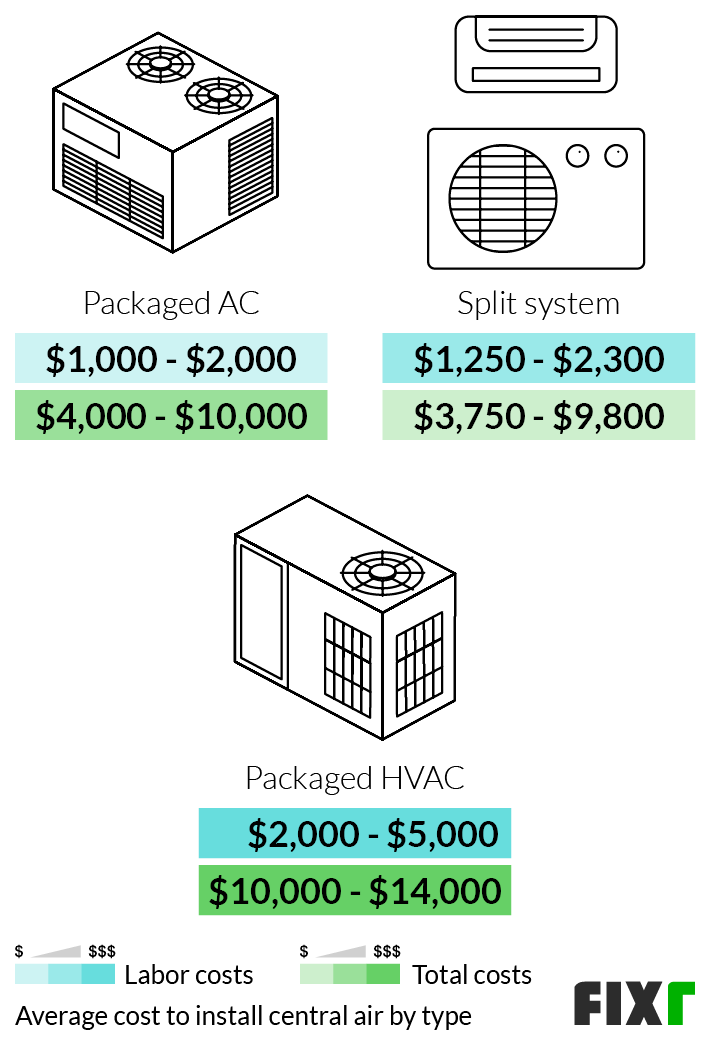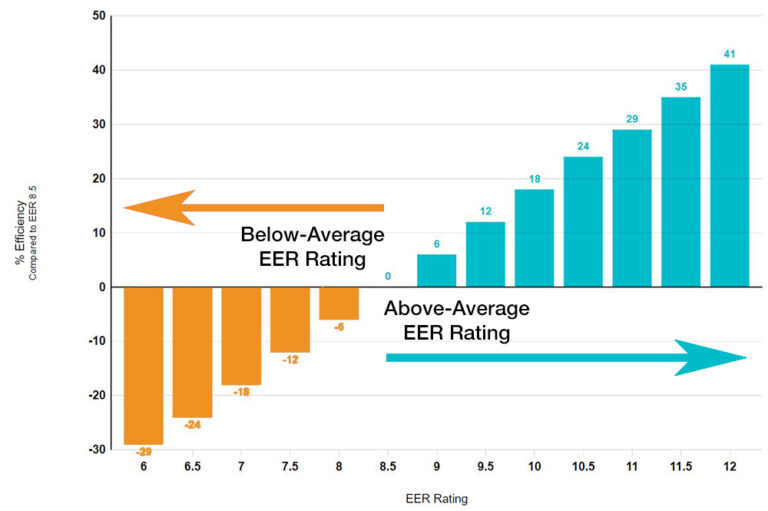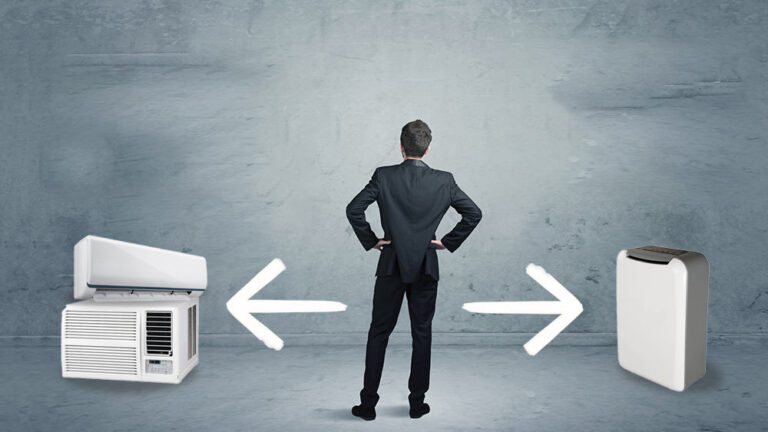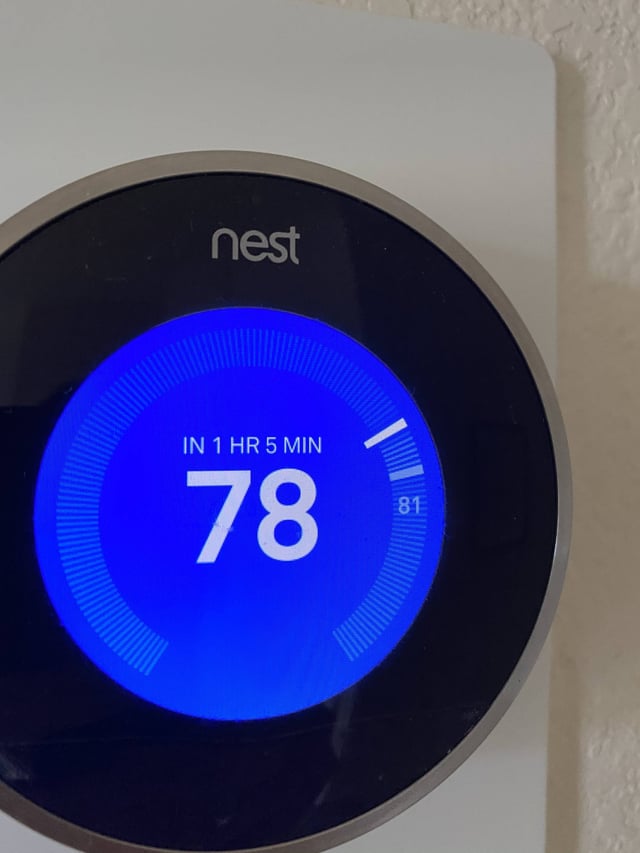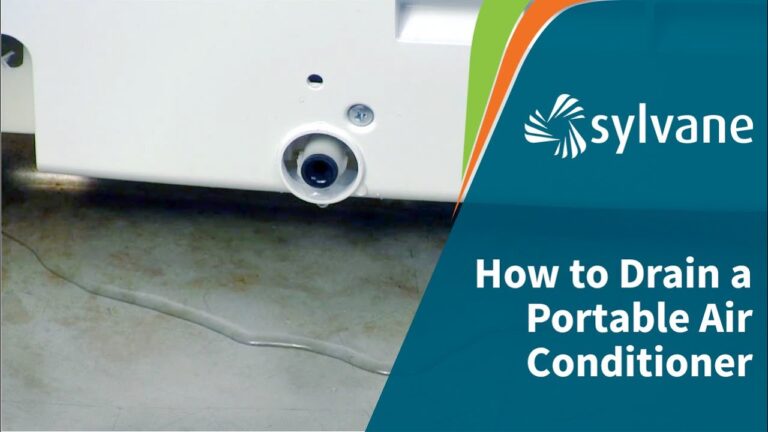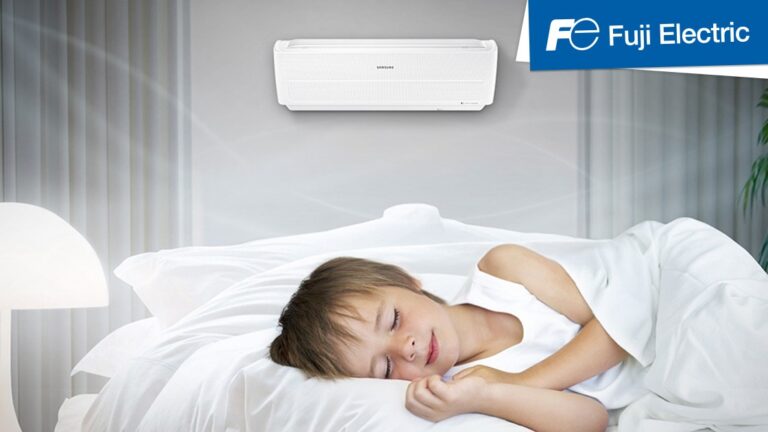How Much Does A Central Heat And Air Unit Cost: Budget Guide
A central heat and air unit costs between $2,500 and $7,500. Prices vary based on size, efficiency, and brand.
Installing a central heat and air unit is a significant investment for homeowners. These systems provide comfort by regulating indoor temperature throughout the year. Factors influencing cost include the unit’s size, energy efficiency rating, and brand reputation. Labor and installation fees also add to the overall expense.
Choosing the right system can improve energy efficiency and reduce long-term utility bills. It’s essential to compare different units and consult professionals to find the best fit for your home. Proper maintenance extends the lifespan and performance of the unit, ensuring a comfortable living environment.
Introduction To Central Heat And Air Units
Central heat and air units provide comfort for homes. They regulate indoor temperature throughout the year. These systems are essential for modern living. Understanding their cost involves knowing their purpose and benefits, and basic components.
Purpose And Benefits
Central heat and air units serve a vital role in homes. They offer consistent indoor temperatures. This ensures comfort during summer and winter.
Here are some key benefits:
- Energy Efficiency: Modern units use less energy.
- Improved Air Quality: They filter and purify indoor air.
- Quiet Operation: Newer models operate silently.
- Increased Home Value: Homes with these systems sell better.
Basic Components
A central heat and air unit has several key components. Understanding these parts helps in estimating costs.
| Component | Description |
|---|---|
| Thermostat | Controls the temperature settings. |
| Furnace | Heats the air during winter. |
| Air Conditioner | Cools the air during summer. |
| Ductwork | Channels air to different rooms. |
| Vents | Allow air to enter and leave rooms. |
These components work together to maintain a comfortable indoor climate. Each part plays a crucial role in the system’s efficiency and effectiveness.

Credit: homeguide.com
Factors Influencing Costs
Understanding the cost of a central heat and air unit can be complex. Several factors influence the final price you pay. Let’s dive into the key elements affecting costs.
Unit Size And Capacity
The size and capacity of the unit play a crucial role in determining costs. Larger homes need units with higher capacity. This ensures efficient heating and cooling. Units with greater capacity cost more. Below is a basic table showing how size impacts cost:
| Unit Capacity (Tons) | Suitable Home Size (sq. ft.) | Approximate Cost |
|---|---|---|
| 1.5 – 2 Tons | 600 – 1000 | $2,500 – $3,500 |
| 2 – 3 Tons | 1000 – 1800 | $3,500 – $4,500 |
| 3 – 4 Tons | 1800 – 2500 | $4,500 – $5,500 |
| 4 – 5 Tons | 2500 – 3000 | $5,500 – $6,500 |
Energy Efficiency Ratings
Another critical factor is the energy efficiency ratings of the unit. High-efficiency units have better SEER ratings. SEER stands for Seasonal Energy Efficiency Ratio. A higher SEER rating means lower energy bills. However, units with higher SEER ratings cost more upfront.
- Units with SEER 13-15: $3,000 – $4,000
- Units with SEER 16-18: $4,000 – $5,500
- Units with SEER 19-21: $5,500 – $7,500
Investing in a high-efficiency unit can save money over time. But the initial cost may be higher.
Installation Expenses
When installing a central heat and air unit, understanding the installation expenses is crucial. These expenses can vary based on several factors. Key components include labor costs and the need for additional materials. Below, we break down these elements for a clearer understanding.
Labor Costs
Labor costs are a significant part of the installation expenses. Professional installation ensures your unit works efficiently and safely. Here is a breakdown of what you might expect:
- Basic Installation: $500 – $1,500
- Complex Installation: $1,500 – $3,000
The complexity of the job impacts the cost. For example, installing ductwork increases the price. Always get multiple quotes from qualified HVAC technicians.
Additional Materials
Additional materials can also add to the overall cost. These materials ensure the system runs smoothly. Here is a list of common materials and their costs:
| Material | Cost |
|---|---|
| Ductwork | $1,000 – $3,000 |
| Thermostat | $100 – $300 |
| Electrical Wiring | $500 – $2,000 |
| Insulation | $500 – $2,000 |
Each of these materials plays a vital role. Ensure they are included in your budget. Proper materials lead to better performance and energy efficiency.
Types Of Central Heat And Air Units
Understanding the types of central heat and air units is crucial. It helps in making an informed decision about your home’s HVAC system. There are two main types: split systems and packaged systems. Each has its pros and cons. Let’s dive into the details of each type.
Split Systems
A split system consists of two main components. One unit is placed outside, and the other inside the home. The outdoor unit houses the condenser and compressor. The indoor unit contains the evaporator coil and air handler.
This type of system is common in residential settings. It is efficient and offers more options for placement. Split systems are also quieter than other types. They come in various sizes, suitable for different homes.
Here are some key points about split systems:
- Higher energy efficiency
- Quieter operation
- Flexibility in installation
- Separate heating and cooling components
Price range: $3,000 to $7,500 including installation.
Packaged Systems
A packaged system combines all components in one unit. This unit is typically placed outside or on the roof. It contains the compressor, condenser, and evaporator coil in one package.
Packaged systems are ideal for homes with limited indoor space. They are also easier to install. This type of system is often used in commercial buildings but is also suitable for homes.
Here are some key points about packaged systems:
- Compact design
- Easy installation
- All-in-one unit
- Suitable for small spaces
Price range: $4,000 to $8,000 including installation.
To summarize, choosing between split and packaged systems depends on your home’s layout and space. Each type has its unique benefits and price points.
Average Price Ranges
Understanding the average price ranges for a central heat and air unit is crucial. This knowledge helps you budget and make informed decisions. Prices vary based on the model, brand, and features.
Basic Models
Basic models are the most affordable option. These units typically cost between $3,000 and $5,000. They offer essential features without advanced technology.
- Single-stage compressors
- Standard efficiency ratings
- Basic thermostats
These models are suitable for smaller homes. They provide adequate heating and cooling but lack advanced energy-saving features.
High-end Models
High-end models come with advanced features. These units usually range from $7,000 to $12,000. They offer superior performance and efficiency.
- Variable-speed compressors
- High SEER ratings
- Smart thermostats
High-end models are ideal for larger homes. They ensure comfort and energy savings.
| Model Type | Price Range | Key Features |
|---|---|---|
| Basic Models | $3,000 – $5,000 | Standard efficiency, single-stage compressors |
| High-End Models | $7,000 – $12,000 | High SEER ratings, variable-speed compressors |
Choosing the right model depends on your budget and needs. Basic models are cost-effective but less efficient. High-end models offer advanced technology at a higher price.
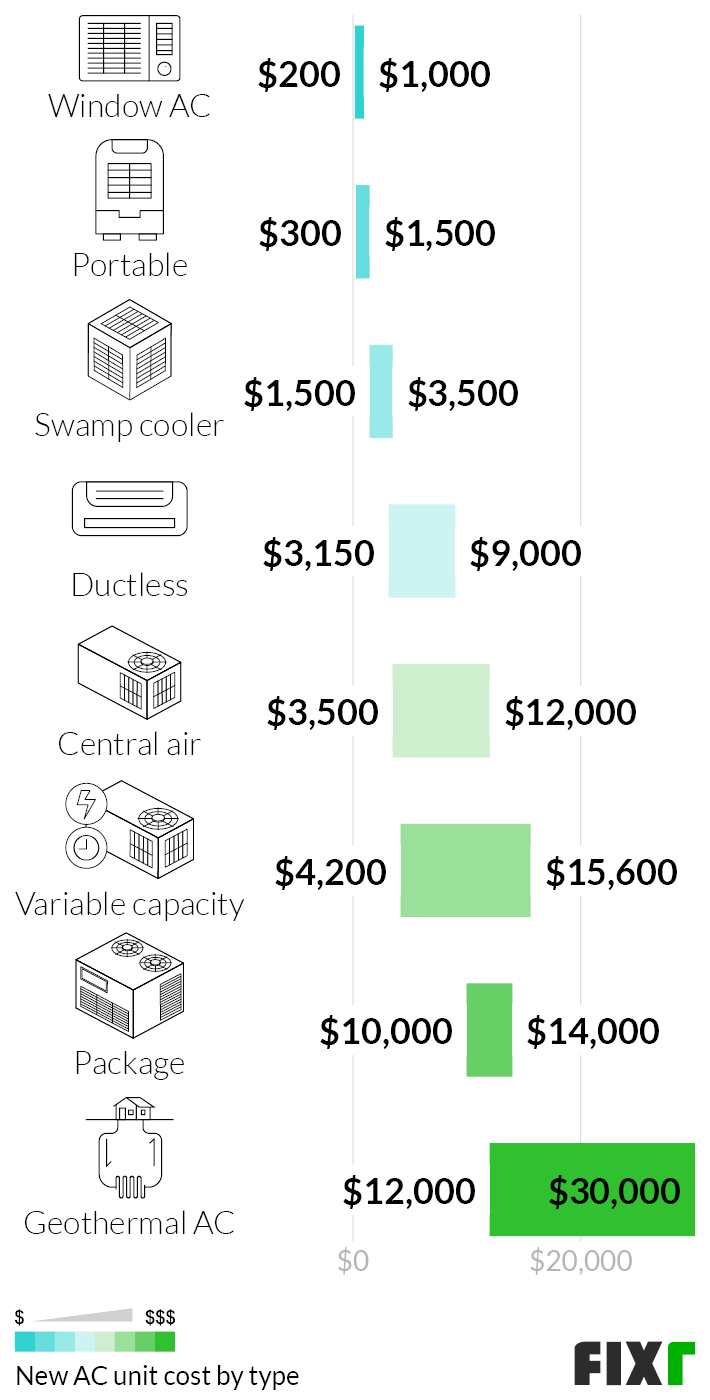
Credit: www.microcapacitacion.com.ar
Maintenance And Operating Costs
Understanding the maintenance and operating costs of a central heat and air unit is crucial. These costs influence your budget and the unit’s lifespan. Proper maintenance ensures efficiency and longevity. Energy consumption affects your monthly utility bills.
Routine Maintenance
Routine maintenance is essential for a central heat and air unit. Regular checks can prevent costly repairs. Here are key maintenance tasks:
- Filter Replacement: Change filters every 1-3 months.
- Cleaning Coils: Clean the coils annually to remove dirt and debris.
- Inspecting Ducts: Check ducts for leaks and blockages regularly.
- Thermostat Calibration: Ensure your thermostat is accurate yearly.
A professional technician should perform a full system check bi-annually. This includes checking refrigerant levels, inspecting electrical connections, and testing system efficiency.
Energy Consumption
The energy consumption of a central heat and air unit impacts operating costs. Energy-efficient units can save money. Consider the following factors:
| Factor | Impact |
|---|---|
| SEER Rating: | Higher SEER ratings mean better efficiency. |
| Insulation: | Good insulation reduces energy usage. |
| Climate: | Extreme climates increase energy consumption. |
Energy consumption also depends on your usage patterns. Lowering the thermostat by a few degrees can reduce costs. Programmable thermostats can optimize energy use and save money.
Cost-saving Tips
Investing in a central heat and air unit is a big decision. Saving money on this investment is essential. Here are some cost-saving tips to help you.
Seasonal Discounts
Many manufacturers offer seasonal discounts on central heat and air units. The best time to buy is during the off-peak seasons. These are typically in spring and fall. During these times, demand is lower. This means prices are often reduced. Keep an eye out for sales and special promotions. You can save a significant amount this way.
Government Rebates
Check for government rebates on energy-efficient units. Many governments offer incentives to encourage energy savings. These rebates can reduce the overall cost of your unit. To find available rebates, visit your local government’s website. Look for programs that promote energy efficiency. You might need to fill out some forms, but the savings are worth it.
| Cost-Saving Tip | Description |
|---|---|
| Seasonal Discounts | Buy during spring and fall for lower prices. |
| Government Rebates | Look for rebates on energy-efficient units. |
- Check manufacturer websites for seasonal sales.
- Visit local government sites for rebate information.
- Identify the off-peak seasons.
- Research available rebates.
- Compare prices and savings options.

Credit: www.microcapacitacion.com.ar
Final Considerations
When considering the cost of a central heat and air unit, it’s essential to think about long-term benefits and the right choice for your home. Here are some final considerations to help you make an informed decision.
Long-term Investment
Investing in a central heat and air unit is a big decision. Energy efficiency should be a top priority. An efficient unit can save you money over time. Look for units with a high SEER rating. The higher the SEER, the more energy-efficient the unit. This rating can help you save on utility bills.
Consider the maintenance costs as well. Regular maintenance can extend the life of your unit. It can also prevent costly repairs. Choose a unit known for its durability. This can reduce the need for frequent replacements.
Choosing The Right Unit
Not all units are the same. Different homes have different needs. Size matters when selecting a unit. A unit that’s too small won’t cool or heat your home properly. A unit that’s too big will waste energy. Consult with a professional to find the right size for your home.
Look at the features of the unit. Some units come with smart thermostats. These can help you control the temperature remotely. Other units have air purifiers built-in. This can be beneficial for those with allergies.
| Feature | Benefit |
|---|---|
| High SEER Rating | Lower energy costs |
| Smart Thermostat | Remote temperature control |
| Built-in Air Purifier | Improved air quality |
Warranty is another crucial factor. Check the warranty period before buying. A longer warranty can provide peace of mind. It can also save you money on repairs.
Remember to read customer reviews. Reviews can provide insights into the unit’s performance. They can also highlight any common issues.
Frequently Asked Questions
Is Central Heat And Air Worth It?
Yes, central heat and air is worth it. It provides consistent comfort, energy efficiency, and adds value to your home.
Is It Cheaper To Get Ac And Furnace Together?
Yes, bundling AC and furnace installations often reduces overall costs. Contractors may offer discounts for combined services.
How Long Should A Central Heat And Air Unit Last?
A central heat and air unit typically lasts 15 to 20 years. Regular maintenance can extend its lifespan.
Conclusion
Understanding the cost of a central heat and air unit helps in budgeting effectively. Prices vary based on size, brand, and installation needs. Remember to consider energy efficiency for long-term savings. Consult professionals to get accurate estimates and ensure optimal performance.
Investing wisely now can lead to comfort and savings later.

